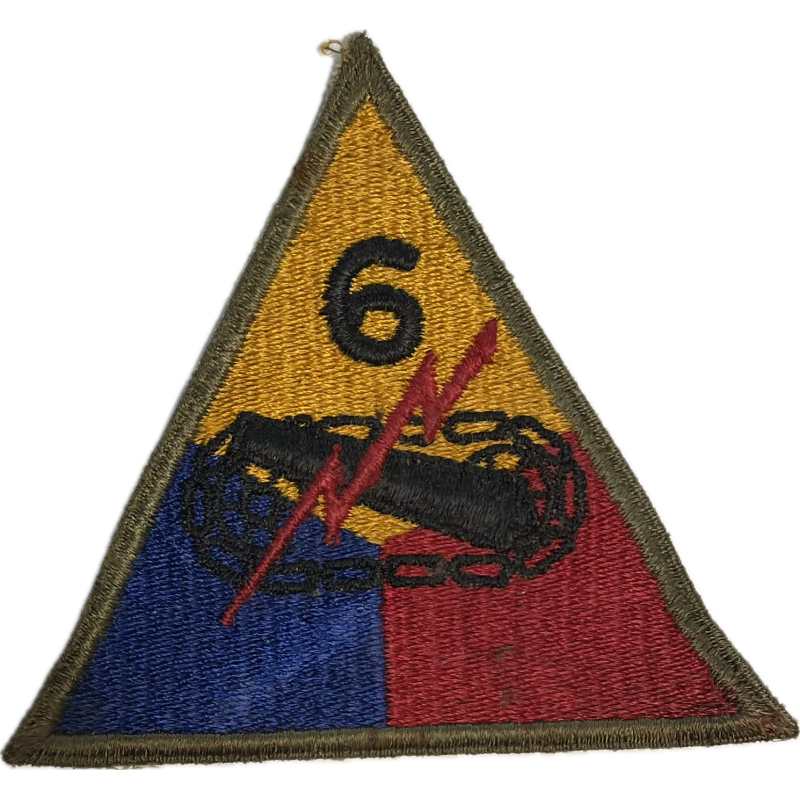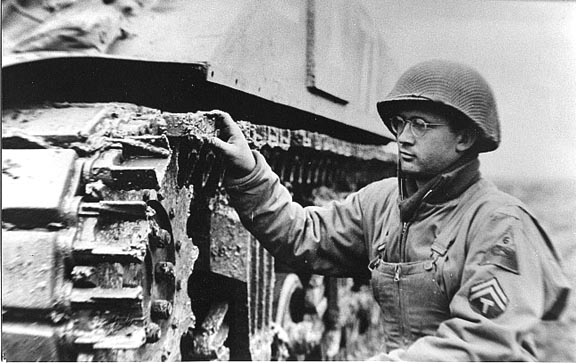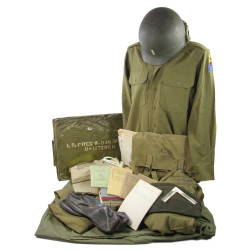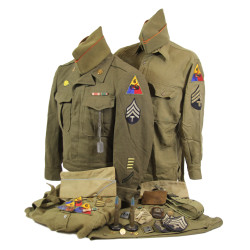




Genuine WWII shoulder sleeve insignia of the 6th Armored Division 'Super Sixth'.
Green back version made in 1943.
The 6th Armored Division landed at Utah Beach during the Normandy campaign and regrouped at Mesnil on July 25, 1944. It captured Granville on July 31, 1944, and then returned to Avranches, where it relieved the 4th Armored Division. In mid-August, the division moved to Lorient, where it was replaced by the 94th Infantry Division. Some units took part in the Battle of Brest, then crossed France, reaching the Saar in November and setting up defenses near Saarbrücken. On December 23, the division was sent to Metz to join the Battle of the Bulge. It fought in the Battle of Bastogne and pushed the enemy back into Germany by January 1945.

You might also like

Genuine WWII shoulder sleeve insignia of the 6th Armored Division 'Super Sixth'.
Green back version made in 1943.
The 6th Armored Division landed at Utah Beach during the Normandy campaign and regrouped at Mesnil on July 25, 1944. It captured Granville on July 31, 1944, and then returned to Avranches, where it relieved the 4th Armored Division. In mid-August, the division moved to Lorient, where it was replaced by the 94th Infantry Division. Some units took part in the Battle of Brest, then crossed France, reaching the Saar in November and setting up defenses near Saarbrücken. On December 23, the division was sent to Metz to join the Battle of the Bulge. It fought in the Battle of Bastogne and pushed the enemy back into Germany by January 1945.

The historical artifacts for sale at PARATROOPER’s are intended for collectors, history enthusiasts, historians and museum curators.
These items do not glorify or promote any of the political, ideological or racial opinions related to the global conflicts that bathed the 20th century in blood.
Besides, we remind you that Article R.645-1 of the French Penal Code establishes fines applicable to fifth class contraventions (except in the specific cases of a filming, show or exhibition which refer to historical events) for any individual who wears a uniform, insignia or symbol reminiscent of those worn by members of the various organizations declared criminal in application of Article 9 of the Charter of the International Military Tribunal annexed to the London Agreement of August 8, 1945 – SS, SD, Gestapo, Nazi leaders (the Führer, the Reichsleitung, the Gauleiters and their main collaborators, the Ortsgruppenleiter, the Zellenleiter and the Blockleiter), or reminiscent of those worn by any person found guilty, by a French or International Jurisdiction, of one or several crimes against humanity established by Articles 211-1 to 212-3 or mentioned in Law No. 64-1326 of December 26, 1964.
The Code provides additional penalties, including the confiscation of the items used or intended for committing the offence.



